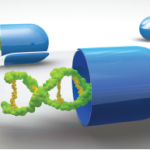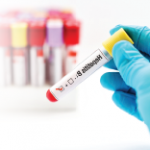
Wavebreak Media / OFFSET
Since it was first described, the spectrum of disease caused by deficiency of adenosine deaminase 2 (DADA2) has been broadening. Features described include systemic vascular and inflammatory features and recurrent stroke, which overlap with childhood-onset polyarteritis nodosa (PAN).
Previous data show that DADA2 has extensive genotypic and phenotypic variation.1 Results from a recently published study expand the description of DADA2 by identifying several distinct genotypes, as well as describing varying phenotypes and treatment approaches to each.2
“These results expand our knowledge of the phenotypic and genotypic variability of children with DADA2,” says Kimberly Morishita, MD, clinical assistant professor, Division of Rheumatology, Department of Pediatrics, University of British Columbia, Vancouver, Canada, a study author.
In particular, the study sheds light on the broad array of clinical symptoms that children with DADA2 may present with and that may suggest the need for screening.
“Screening for DADA2 in a broader spectrum of new and existing patients with suspected systemic vasculitis may enable earlier identification and improved management of these patients,” says Dr. Morishita.
Expanding Spectrum of DADA2
Using data from a childhood vasculitis database (the Pediatric Vasculitis Initiative or PedVas), investigators sequenced the coding regions of the ADA2 gene in 60 children and adolescents (aged 18 and younger) reported as having cutaneous PAN, unclassified vasculitis, systemic vasculitis with onset of symptoms prior to the 5th birthday or history of stroke. Only two children were clinically suspected of having DADA2.
The investigators identified nine children with DADA2: five with PAN, three with unclassified vasculitis and one with anti-neutrophil cytoplasmic antibody (ANCA) associated vasculitis.
Of the nine patients who had ADA2 deficiency, eight had biallelic rare variants in known coding regions of ADA2 (p.Gly47Arg and p.Gly47Ala) or in novel coding regions of ADA2 (p.Arg9Trp, p.Leu351Gln and p.Ala357Thr), and one had no identified variants in the gene’s exons, but complete deficiency of the protein was confirmed.

Dr. Morishita
When looking at the clinical phenotypes associated with the eight patients with rare or novel ADA2 variants, the investigators describe a wide variation, with age of symptom onset ranging from one week to 16 years, a range of cutaneous involvement in eight patients (e.g., livedo reticularis/racemosa, nodular lesions, soft tissue/subcutaneous edema and ulcers) and neurological involvement in eight patients (e.g., stroke and diffuse cerebral atrophy in six and peripheral nervous system involvement in four).
Other findings included low immunoglobulin M (IgM) levels in four patients, despite normal IgA and IgG levels, and blurred vision without other diagnoses of ocular inflammation in four patients. Only patients with PAN who were later diagnosed with DADA2 had the symptom of blurred vision, the other PAN patients did not. All patients were negative for anti-nuclear antibodies.
Given the wide variation in phenotypes, including older age in patients classified with PAN and range of systemic inflammatory features, the investigators suggest the differential diagnosis for DADA2 include patients of all ages with PAN, as well as patients with symptoms outside PAN.
Kathleen M. O’Neil, MD, professor of clinical pediatrics, Division of Pediatric Rheumatology, Indiana University School of Medicine, Indianapolis, says, “DADA2 should be considered in the differential diagnosis of patients of all ages with otherwise idiopathic polyarteritis nodosa and others outside the PAN phenotype. DADA2 should be considered in unexplained early childhood CNS [central nervous system] disease including, but not exclusively, stroke with systemic inflammatory features, even without a classic vasculitic rash.”
Implications for Treatment
Similar to the variation in phenotypes found among the nine patients, the study also found variation in treatment response. Initial treatment for all patients included immunosuppressant medications and corticosteroids, regardless of disease severity, which ranged from mild and limited to the skin to severe or lethal (see Table 1).
| Severity of Disease | Response to Treatment |
|---|---|
| Mild (n=2) Primarily skin disease | • Both patients responded well to initial treatment. • One patient required intravenous cyclophosphamide at 6 months for ongoing disease. |
| Moderate to severe (n=5) Neurological symptoms, renal disease, ulcerating skin disease | • Two patients responded well to initial treatment. • One patient switched from initial treatment to a etanercept after 1 month and had inactive disease with no corticosteroid use at 6 months. • One switched to mycophenolate mofetil at 6 months due to ongoing disease activity. • One switched to intravenous cyclophosphamide at 3 months due to ongoing disease activity but achieved a stable response only after switching to etanercept 5 years after diagnosis. |
| Very severe (n=2; twins) Bowel perforations and hematologic disease; severe neutropenia, urosepsis | • One patient initially treated with corticosteroids alone was treated with etanercept after 1 year and died. • One patient responded well to initial treatment with corticosteroids and etanercept; relapsed at 4 months; underwent bone marrow transplant. |
According to the investigators, these varying results suggest that earlier diagnosis of DADA2 and the use of more effective treatments may improve treatment outcomes. “Even patients in our cohort with predominantly skin disease required treatment with immune-suppressing medications and corticosteroids,” say the authors in their study.2 “Earlier diagnosis of DADA2 in such patients may have prompted alternative, more effective treatments and less corticosteroid use.”
They also highlight the efficacy of etanercept in four patients, noting an excellent response in two patients.
Screening

Dr. O’Neil
Based on these results, the investigators point to the importance of screening children for DADA2 to identify disease early and initiate treatment promptly
and appropriately.
“Consider screening for deficiency of ADA2 in children with vasculitis rash, unclassified vasculitis, polyarteritis nodosa, or unexplained early-onset central nervous system disease with systemic inflammation,” says Dr. Morishita.
Dr. O’Neil also emphasizes the importance of early diagnosis. “Early onset disease with CNS involvement and systemic inflammatory features could be due to DADA2, and early diagnosis could lead to effective treatment with anti-inflammatory medication, including early use of TNF inhibitors, which can be life-saving,” she says. “Any child or adolescent with onset of PAN not due to an obvious cause like Streptococcus pyogenes infection or Crohn’s disease should be evaluated for DADA2.”
Mary Beth Nierengarten is a freelance medical journalist based in Minneapolis.
References
- Meyts I, Aksentijevich I. Deficiency of adenosine deaminase 2 (DADA2): Updates on the phenotype, genetics, pathogenesis, and treatment. J Clin Immunol. 2018 Jul;38(5):569–578.
- Gibson KM, Morishita KA, Dancey P, et al. Identification of novel adenosine deaminase 2 gene variants and varied clinical phenotype in pediatric vasculitis. Arthritis Rheumatol. 2019 Oct;71(10): 1747–1755.



